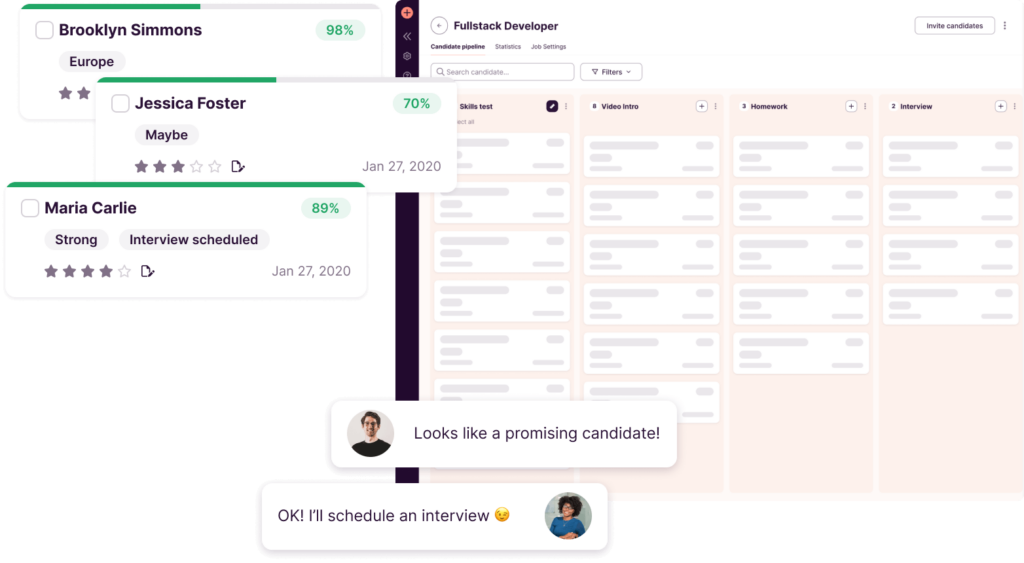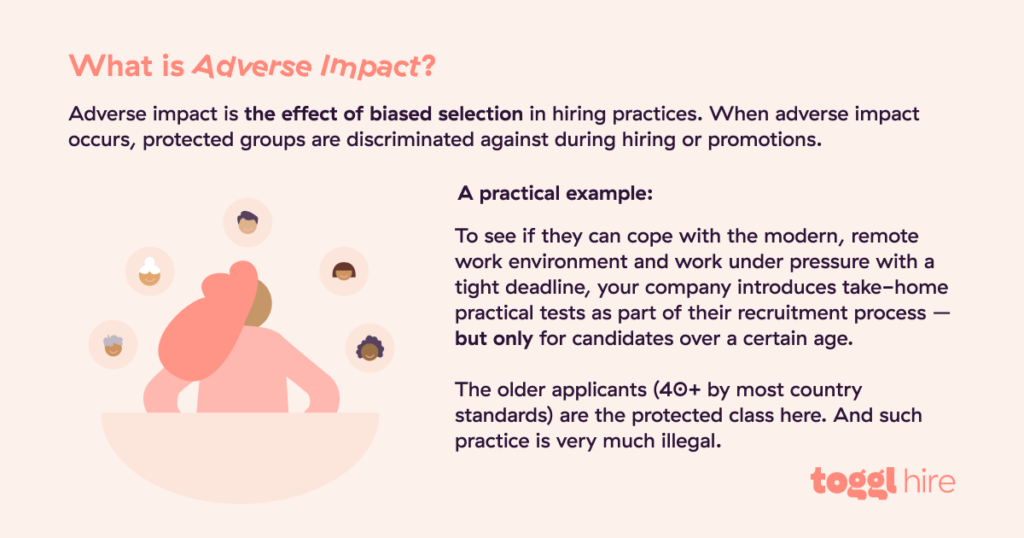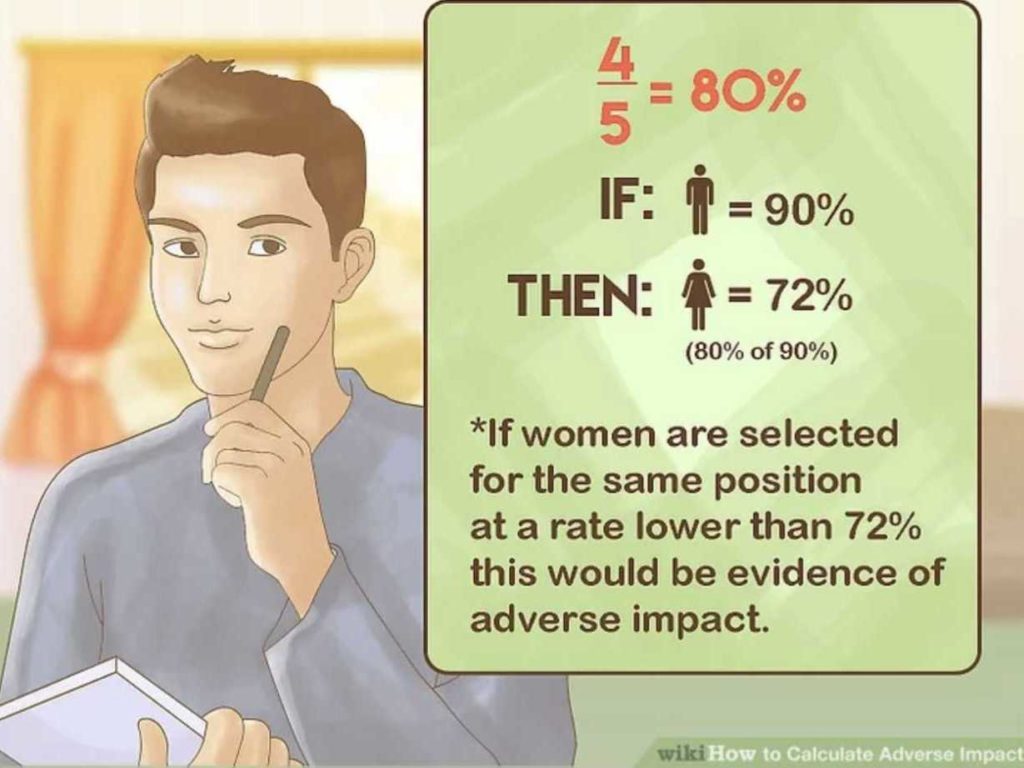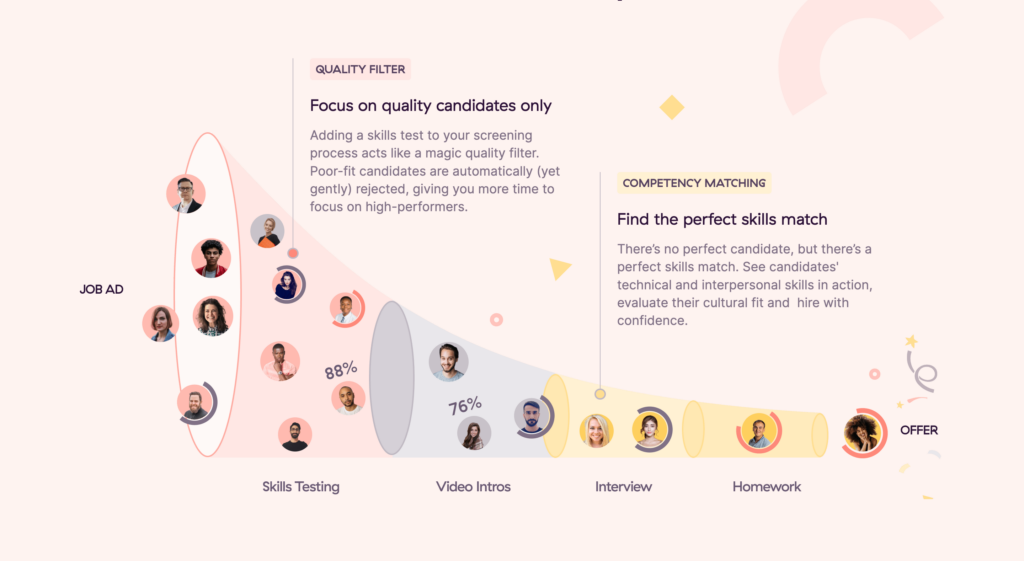If you were to ask the average hiring manager or recruiter today, they would say that diversity and inclusion are pretty important to them. Businesses with diverse boards are 43% more likely to have higher profits, yet 57% of employees think that their companies should be more diverse. The cause of this disparity could be found in adverse impact.
5 Ways to Minimize Adverse Impact
Did you know that inclusive teams make better business decisions 87% of the time? And that teams with above-average diversity have 19% higher revenue on average? And yet, discriminatory practices still happen. One of the main reasons is the adverse impact.
This phenomenon happens when we unknowingly discriminate against a certain group during hiring, which can have practical and legal consequences. Today, we’re going to show you what it is and how you can prevent it from happening in your workplace.
TL;DR – Key Takeaways
- Adverse impact happens when there is a biased selection in hiring and protected groups are discriminated against.
- Adverse impact and disparate impact are two different terms. Primarily, adverse impact relates to hiring practices, while disparate impact deals with other areas of life, such as education.
- Measuring adverse impact leads to many benefits: more fairness and equality, staying legally compliant and avoiding lawsuits, more diversity and inclusion, a better employer brand, lower turnover, and general improvements for your hiring processes.
- Measuring adverse impact is fairly easy if you follow the four-fifths rule. In short, the selection rate of the protected group should be above 80% of the selection rate of a majority group.
- There are five main ways to minimize adverse impact: analyze and refine your job requirements, standardize your recruitment efforts, use objective assessments, hire more broadly and from various places, and provide unconscious bias training.
- Skills assessments provide a quick and simple way for hiring teams to structure their recruitment process and make evidence-based hiring decisions instead of relying on first impressions or gut feelings.

What is the adverse impact?
Adverse impact is the effect of biased selection in hiring practices. When adverse impact occurs, protected groups are discriminated against during hiring or promotions.
Here is a practical example: your company introduces take-home practical tests as part of their recruitment process, but only for candidates over a certain age, to see if they can cope with the modern, remote work environment and work under pressure with a tight deadline. The older applicants (40+ by most country standards) are the protected class here.
This not only results in a poor quality of candidates, but it is also very much illegal around the world.

When it comes to adverse impact, the United States recognizes several categories of adverse impacts:
- disability status
- veteran status
- age
- gender identity
- and religion
The body in the United States in charge of this legislation is the Equal Employment Opportunity Commission (EEOC).
In short, adverse impact affects your entire business, but it can specifically negatively affect protected groups.
Adverse impact vs disparate impact – what’s the difference?
In the world of hiring, the terms “adverse impact” and “disparate impact” are often lumped together. And while both deal with (unintended) workplace discrimination, the way they are applied is different.
Adverse impact
When we talk about the adverse impact definition, we’re primarily discussing employment practices and situations in the workplace. Adverse impact as a term comes from the Uniform Guidelines on Employee Selection Procedures, a document introduced in 1978.
The document established something called a four fifths rule – where the selection rate of the protected group should be higher than 80% of the selection rate of a majority.
For example, one of your common interview questions for female candidates could relate to their relationship status or children (Are you married? Do you have children? Are you planning to have a family?). You may want to hire single women because you consider married women with children to be less devoted to work – which is a typical example of adverse impact discrimination. Even worse, it’s intentional discrimination.
Disparate impact
Unlike adverse impact, disparate impact concerns situations outside of the workplace.
The term was first mentioned in the United States even earlier than adverse impact – as early as 1964. It touches upon all areas of life, such as education and housing.
An example from the United States Department of Justice has an interesting explanation of disparate impact:
Students who are more than five minutes late to a class are punished by having to go and see the principal. If the problem tends to repeat, they have longer suspensions.
While this is seemingly done with good intentions, it was shown that the practice has a disparate impact on Asian-American students – as they lived further away from the school zone and tended to be late more often.
No matter what type of business you run, being familiar with both terms helps not only impose fair hiring practices but also stay legal, compliant, and lawsuit-free. Both are managed by federal laws in the United States and should be taken very seriously.
Why is it important to measure adverse impact?
Measuring adverse impact is much more than ticking off a box to make the HR department happy. There are plenty of practical reasons to keep tabs on your adverse impact.
- You promote fairness and equality. You can ensure that your diverse hiring is not on paper only and that you practice what you preach. By keeping your adverse impact in check, you can hire without fearing (unconscious) bias in your employee selection procedures.
- You stay legally compliant and reduce the risks of litigation. Depending on where you are in the world, ignoring adverse impact could lead you to break an employment law or two and, eventually, get hit with adverse impact lawsuits. Besides hiring, it can also help identify problems before they reach the litigation stage.
- You improve diversity and inclusion in the workplace. Adverse impact is one of the basics for preventing an army of yes-people and instead hiring professionals with various backgrounds, ethnicities, identities, and ways of thinking.
- You improve your employer branding and reputation. Generations such as Gen Z and millennials strongly identify with brands that care for social impact and responsibility. It’s no wonder, as 56% of millennials are white, compared to 75% of Baby Boomers. Monitoring your adverse impact will make you a more desirable employer for many candidates.
- You can decrease your turnover. If your hiring efforts are fair and unbiased, so are your business practices. An employee who knows that their workplace is dedicated to inclusion and diversity is less likely to leave you.
- You can refine your entire recruitment process. When you measure adverse impact, you can prevent discriminatory practices and identify potential areas for improvement. You can give equal opportunity to all candidates and improve your organization’s ability to find top talent.
One famous example of adverse impact and poor hiring practices comes from Abercrombie and Fitch, the popular clothing company. In 2003, a group of people sued them because the company would not hire them based on their race, color, religion, sex, and national origin.

Further proof that adverse impact exists was found in the company handbooks. Namely, Abercrombie and Fitch wanted employees with a “natural, classical, American look”. This meant prohibiting dreadlocks and gold chains, and mandating everything, including the underwear the employees wore.
The end result? The class-action lawsuit was settled in 2004, with the company paying around $40 million in damages, as well as making a plea to hire a chief diversity officer.
The financial damage was just a part of the consequence, but the loss of reputation was harder to make up in the coming years.
How to measure adverse impact?
In 1978, the Uniform Guidelines on Employee Selection Procedures were created following a landmark case Griggs v. Duke Power. Willie Griggs sued his employer Duke Power claiming that the selection test was implicitly biased against African-Americans.
This document gave birth to the famous ⅘ rule for measuring adverse impact. It hinges on comparing the selection rates of candidates from different groups to each other.
Here’s an example of measuring adverse impact in a typical hiring process:
Say 100 men and 200 women applied for 24 roles in an organization. From this candidate pool, 9 men and 15 women were hired.
This gives men a selection rate of 9% and women a selection rate of 7.5%. If we divide the lower selection rate by the higher selection rate, the number we get should be equal to or larger than ⅘ (80%) to pass the adverse impact test.
7.5/9 = 83.3%
In this case, there was no adverse impact, as the group with the lower selection rate (women) was selected at a rate higher than 4/5ths that of the group with the highest selection rate (men).

In short, it’s a matter of running simple maths and should not take any business much time or resources.
5 ways to minimize adverse impact
The good news is that adverse impact is a well-studied phenomenon and that there are practical ways to minimize and eliminate it from the workplace. Here are a few that you can start using today.
1. Analyze and Refine Job Requirements
Make sure that the job description and job requirements listed in the job ad are actually relevant to the position and the performance of a candidate when they are hired. When you add irrelevant criteria, you can put certain groups at a disadvantage (e.g., a specific national origin or a sexual orientation).
Best practices for implementing this tactic:
- Analyze what the job is about before putting together a job ad. If you have this position already, do a task analysis and write down what the ideal candidate would do if they were hired. That way, the list of responsibilities is grounded in real-life examples and not made-up scenarios.
- Be specific about the criteria you set. Instead of asking for “great communication skills”, ask for “experience writing with a clear style and tone of voice as well as speaking in front of larger audiences”.
- Use tools such as Textio to write your job ads. These tools help provide equal employment opportunities by showing you whether your job ads are biased against certain minority applicants or protected group members.
2. Standardize Recruitment and Selection Processes
Make it an organizational practice that every candidate goes through the same process, regardless of their background, experience, age, disability status, or other factors. When the hiring process is standardized, there are fewer chances of bias against some candidates.

Best practices for implementing this tactic:
- Ditch the resume. It’s chock-full of data that can lead to adverse impact, including age, race, gender, location, and others. Instead, start the hiring process with a hiring test such as Toggl Hire. That way, you get to see the job applicants’ results first and their profiles second.
- Document your interview process. Ensure that each candidate gets the same questions and opportunities to tell their story in an interview. Unstructured interviews lead to chit-chat, and your hiring manager may be impressed by someone simply because of how pleasant the candidate was in the interview.
- Advertise the job on a variety of platforms to cast a wider net. For example, don’t use social media ads only as the targeting could attract a certain type of job applicant.
3. Implement Objective Assessments
A resume is a poor judge of someone’s job ability. Instead, use an objective assessment such as a skills test or a job simulation to determine if someone can get the job done and to which degree.
If you look at a resume and see a Fortune 500 company on a candidate’s resume, you may become biased and think that they can do the job better than someone from a startup.
Naturally, this leads to a skewed employment decision.
Best practices for implementing this tactic:
- When possible, use skills testing tools, such as Toggl Hire, as the first step in hiring. This way, you can objectively determine who is a good fit and weed out a large chunk of unsuitable candidates.
- Use homework assignments for successful applicants. Once someone makes it further in the employment process, give them a practical task that they can complete at home in a few hours.
4. Broaden Recruitment Efforts
Great talent comes from a variety of places. Job boards are a popular choice for finding new candidates, but statistics show that only 50% of people who actually apply come from a job board.
Tap into different places to find new talent rather than relying on the same old ones that get the job done – pardon the pun.
Best practices for implementing this tactic:
- Start an employee referral program to motivate your existing employees to refer a new colleague and get a bonus on their paycheck.
- Use social media ads with different targeting variations to attract various types of applicants. E.g. you’d want to look into Tiktok for attracting younger generations, while Facebook might be better suited for a Millennial audience.
- Reach out to past applicants and invite them to apply again – they’re now older and more experienced.
- Put a fresh lick of paint on your Careers page and highlight what makes you and the position attractive to potential candidates.
5. Provide Unconscious Bias Training
The problem with unconscious bias is, well, that it is unconscious. Many of us are biased without actually knowing it, and we make employee selection procedures flawed despite our best intentions.
To make your employees more aware of unconscious bias, put them through training every now and then.
Best practices for implementing this tactic:
- Continuously educate your employees about the legal consequences of adverse impact in your state, country, or jurisdiction.
- Sign up for unconscious bias training courses; you can take them anywhere and anytime, as long as you’re online.
Last but not least, think of eliminating adverse impact as an ongoing process that aims to find more qualified candidates while keeping you compliant.
How can technology help mitigate adverse impact risks in the hiring process?
Technology is not perfect, but when trained the right way, it can be immensely less biased than any human.
By employing technology in your hiring practice, you can make sure that they are less biased and that you hire for skills – not gender identity, sexual orientation, or something else.
With Toggl Hire pre employment tests, you can create a skills test as the first step of the hiring efforts. The candidates take a test and you only see the best-performing results – not the candidate’s national origin, age, or something else.
Start using Toggl Hire today and become the kind of company employees are proud to work for!
Juste loves investigating through writing. A copywriter by trade, she spent the last ten years in startups, telling stories and building marketing teams. She works at Toggl Hire and writes about how businesses can recruit really great people.






